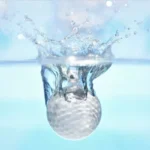It’s a question that every golfer has asked themselves at some point in their game: how many number of dimples on a golf ball?
But, if you’re new to the game, it can be hard to wrap your head around why the dimples are even there in the first place. This guide will help answer your questions about the mysterious dimples on a golf ball.
The number of dimples on a golf ball can vary, but it typically ranges from 300 to 500 dimples. This design enhances aerodynamics and flight stability.
What Do The Dimples Do?
The dimples on a golf ball may look like they’re there just for aesthetics, but they serve an essential purpose. When a golf ball is hit, it creates turbulence as it moves through the air. This turbulence robs the ball of speed and accuracy, making it difficult to control its trajectory and reach its intended target.
The dimples reduce this turbulence and create lift, improving speed and accuracy. In other words, the dimples make sure your shots go farther and straighter than they would if the ball had no dimples!
Also Read: Do Golf Balls Make A Difference Handicap?
Number Of Dimples On a Golf Ball

Most regulation golf balls have 336 dimples arranged in symmetrical patterns across their surfaces. The number of dimples can vary from one type of golf ball to another, however; some premium balls may have up to 500 or more tiny divots!
That said, most recreational players will find that 336 is plenty enough for them—any more than that won’t make much difference in terms of performance.
Also Read: What Is The Density Of A Golf Ball?
The Physics Behind Dimpled Golf Balls
The purpose of having dimples on a golf ball is quite scientific. First, the dimples create turbulence around the ball’s surface, which reduces drag and helps keep it in the air longer.
This phenomenon is called “the Magnus effect,” It applies to any object with an uneven surface moving through a fluid (in this case, air). The dimples also change how air flows over and around the ball, reducing its spin, and making it easier to control during flight.
Why Do Golf Balls Have Dimples?
So why do these little indentations exist in the first place? Dimples are essential for lifting the ball and reducing drag as it moves through the air. Without them, a golf ball would not be able to travel nearly as far as it can with them because air resistance would be much higher.
This is due to boundary layer separation; when air passes over a smooth surface such as a golf ball without any irregularities, it causes turbulence, creating drag that slows down the ball’s movement through the air.
However, when irregularities such as dimples are present on that same surface, less turbulence occurs, which reduces drag and allows for more distance and accuracy in your shots.
Also Read: Are Golf Balls Hollow?
How Far Can You Hit a Golf Ball Without Dimples?
The answer may surprise you if you’ve ever wondered how far you can hit a golf ball without dimples. According to research, dimples on a golf ball can add up to 45 yards of distance. That’s because dimples help to reduce drag and keep the ball in the air longer.
Without dimples, the ball would spin more quickly and be more likely to slice or hook. In addition, dimples help to add a backspin, which can give the ball more lift and make it easier to control.
So if you want to add some extra yardage to your drive, don’t be afraid to experiment with different golf balls. You may be surprised at how much of a difference a few dimples can make.
Also Read: Are Colored Golf Balls Legal?
Conclusion
So now you know why golf balls have those little bumps all over them—and number of dimples on a golf ball! Whether you’re an avid golfer or just getting started with the sport, understanding why those little indentations exist can help you play and understand your equipment better. So now get out there and show off your new knowledge! Happy golfing!



